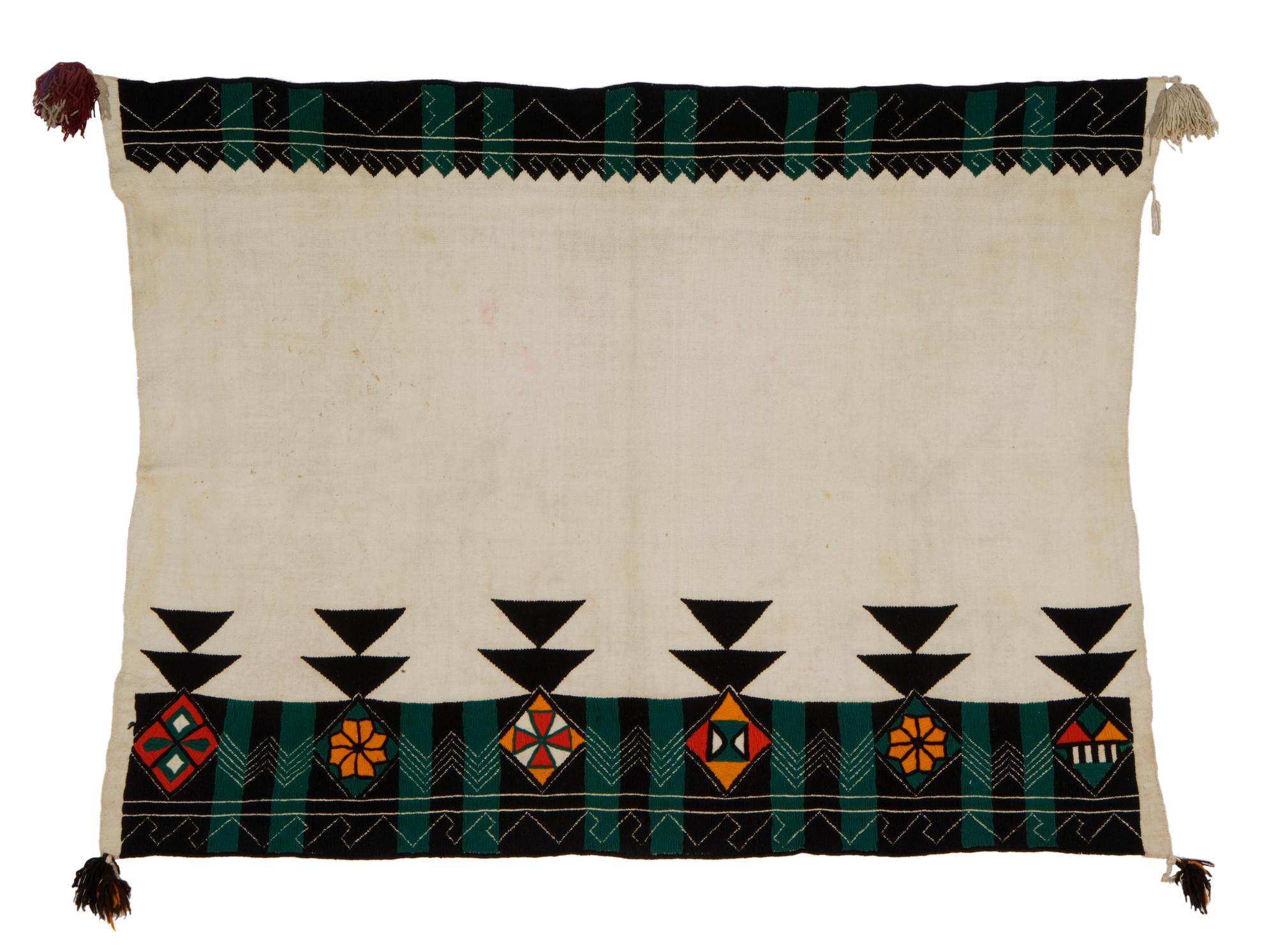
Photograph by Addison Doty. Copyright 2009 School for Advanced Research.
Robe | Mi'ha
Date: 1920s
Artist or Maker: Unknown
Dimensions:
149.9 x 114.3 cm (59 x 45 in.)
Medium: cotton | wool | dyes
Credit Line: Indian Arts Fund purchase for the permanent collection, 1929.
Place Made:
Zuni Pueblo, McKinley County, New Mexico, Southwest, United States, North America
Object Number: IAF.T42
Not on view
Tribal Collection Review RemarksJim Enote and Octavius Seowtewa during collection review visit June 10 and 11, 2009 (Events Record “Collection Review: Zuni Tribe, Review 2”): This is a ceremonial robe that would have been used for many ceremonial dances, including Shalako (but not just Shalako). The Zuni word for it is mi’ha. They are items owned by individuals, but which are often loaned to others for ceremonial use. Mi’has are woven by men and embroidered by women. It is now common for people to buy white cloth and then embroider it at Zuni. The embroidered design motifs on this piece include cloud and water waves at the top, and flowers, and rain clouds, and water wave designs at the bottom. There is a crescent-shaped mark on the interior side of the piece that means it was used in a particular ceremony, the details of which cannot be given here. This piece should be considered ceremonial because it was worn at ceremonies. It is okay for photography and publication by anyone and has no special storage or handling restrictions.
In Collection(s)
Bibliography:
Pueblo Indian Textiles
- Pg. 47
- Fig. Plate 8
The Indian Arts Research Center, in collaboration with Native American community scholars, strives to present accurate collections records. Records may be updated as new information becomes available and is reviewed with the Native American community having cultural affinity to particular items. Please write to iarc@sarsf.org if you have questions or concerns related to the documentation.
